2022 Hyundai Ioniq 5 First Drive Review: The Future is Now

FAST FACTS
| Motor: | 2x permanent-magnet synchronous motors |
| Output: | 320 hp, 446 lb-ft |
| Transmission: | 1AT, AWD |
| US fuel economy (MPGe): | 110/87/98 |
| CAN fuel economy (Le/100KM): | 3.2/3.2/3.2 |
| Range: | 256 miles / 412 km |
| Starting Price (USD): | $40,925 (inc. dest.) |
| As-Tested Price (USD): | $55,725 (inc. dest.) |
| Starting Price (CAD): | $46,824 (inc. dest.) |
| As-Tested Price (CAD): | $61,824 (inc. dest.) |
This is the coolest looking car to come out in years.
There’s a lot of reasons to like the 2022 Hyundai Ioniq 5. The Korean brand’s first from-the-ground-up dedicated EV is roomy, reasonably affordable, and rides well. It is, by all the typical metrics, a very good car. The market has a lot of good cars.
Get a Quote on a New Hyundai Ioniq 5But those looks make the Ioniq 5 a much rarer thing: desirable. The EV revolution is fast approaching, and Hyundai is staking its future on this high-style pseudo-crossover, one that puts the “U” in SUV with clever charging solutions. Doing all this at a price folks can afford is a big power play, and based on a first drive in San Diego, Hyundai should have a hit on its hands.
What’s new?
Let’s talk about styling a little more. Everywhere you look on the Ioniq 5, there’s a smart, deliberate slash or design flourish that demands attention. The pixel-art headlights, with nothing but clean plastic between them, are ultra-modern. Instead of the typical black plastic cladding found on most crossovers, the lower portions of the Ioniq 5’s bodywork are a lighter silver, contrasting with the matte gray of our tester. The slashes in the wheel arches are like a camera’s aperture, and they align with the hood and door shutlines. Following another tester, the back end of the Ioniq is unmistakeable, with the funky full-width LED bar looking straight off the auto show circuit.
The Ioniq 5 does what the BMW i8 did a few years ago: it immediately makes everything else around it look ancient. Will the impact lessen because of how many will likely be on the roads? Maybe. But Alain de Botton said “beauty is a promise of happiness” in The Architecture of Happiness, and roads full of Ioniq 5s sure sounds promising to me.
The design hides the size of the Ioniq 5, too. A low ride height furthers the illusion. Think Tucson-ish, but with a wheelbase longer than even the Palisade three-row. But instead of coming across as another mall-crawler, in person the Ioniq 5 comes across like a hatchback someone left in the (3D) printer, scaled up to 117 percent. A future high-performance N model would look awesome, especially based on the evidence of the Kona N.
SEE ALSO: 2022 Hyundai Kona N First Drive Review: Pint-Sized Pocket RocketUnder that carefully crafted sheetmetal sits Hyundai’s E-GMP platform. It comes in rear- and all-wheel drive forms, meaning one or two electric motors. E-GMP also runs on 800-volt architecture, much like the Porsche Taycan. That means quicker charge times, for either its 58.0- or 77.4-kWh battery pack options.
2022 Hyundai Ioniq 5 interior and comfort
Light and airy is the name of the game inside the Ioniq 5. E-GMP provides a long wheelbase (118.1 inches / 3,000 millimeters) and a flat floor, so the Ioniq 5 has oodles of space front and rear. Aiding in this sense of space is a slidable front center console. Press a button and it’ll slide almost six inches fore and aft, making it easy to pass items to folks in the rear. Or slide across to the passenger side to avoid exiting into a busy street. I ask one of Hyundai’s engineers if this means a bench seat might show up some day, but he tells me safety standards make that unlikely.
Not to be outdone, the front seats comes with their own party trick. Press another button, and the seat folds back almost flat, while a powered footrest pops up. This Relaxation Comfort seat is inspired by NASA research, reclining the body to an optimum, natural angle. When they’re upright, the front seats prove supportive, with particularly good lower back cushioning. The artificial leather covering the seats is quite convincing, too.
The Ioniq 5 interior can’t quite measure up to the exterior’s wow-factor, though. It’s a little too minimalist, and the plastics aren’t at the level of the (admittedly slightly pricier) Mustang Mach-E. That’s somewhat forgivable given much of the material is made from eco-friendly sources—recycled bottles for the seats, recyclable Tyvek for the cool marble-like door insert—but disappointing nonetheless. The steering wheel has the right thickness and a good overall feel, but the four-dot center needs a Hyundai logo. This is a car to be proud of, Hyundai!
SEE ALSO: Ford Mustang Mach-E vs Tesla Model Y ComparisonA glass roof lets the light in—not that there’s much of it on our uncharacteristically drizzly day of testing. The rain does provide a good NVH test however, as the interior remains hushed, even at highway speeds. EVs face a tougher test without the masking noises of an engine, so I’m happy to report the Ioniq isolates us from the din outside.
2022 Hyundai Ioniq 5 technology and features
Hyundai has tweaked its infotainment system for Ioniq 5 duty. The menus are bright, matching the white bezel that stretches across the dashboard. It’s an easy user interface to figure out, and I’m happy to see Hyundai has reinstated physical volume and tuning controls. I wonder how distracting it will be at night, however. The infotainment system also supports over-the-air (OTA) updates. CarPlay and Android Auto are both standard but wired, which isn’t the greatest because of that open passthrough in the footwell. The requisite storage bin is in an awkward spot; otherwise, you’ve got a cable dangling between the seats. At least the wireless charger in the slidable console is large.
A wide head-up display (HUD) keeps pertinent info right in the driver’s line of vision. It’s a bright, useful display, especially if used in conjunction with the native navigation system. Here the HUD uses augmented reality, beaming indicator arrows onto the road ahead for required turns.
The Ioniq 5 supports bidirectional charging. Hook up the optional adapter and it’ll supply up to 1.9-kW of power through its charge port, enough for a camp site or tailgate party. The top trim includes an additional outlet below the rear seats, too. Charging the Ioniq 5 itself can take just 18 minutes from 10 to 80 percent charge when hooked up to a DC fast charger.
Hyundai’s SmartSense suite of driver assists is standard on the Ioniq 5. You’ll find automated emergency braking (now with junction assist), rear cross-traffic alert, auto high beams, and blind-spot monitoring on all trims. Full-range adaptive cruise control is standard as well, with mid-spec trims adding in the latest version of Hyundai’s Highway Driving Assist. HDA II can now change lanes once a turn signal is active, and it will adjust the car’s position within the lane if a nearby car starts inching in. Moving up to the top trim adds a 360-degree camera, Hyundai’s wicked-smart Blind-Spot View Monitor, and the fob-activated smart parking assist.
One low-tech piece of equipment the Ioniq 5 lacks—and needs—is a rear window wiper. When rain is coming at you sideways, it’s important you have a clear view out the back.
2022 Hyundai Ioniq 5 driving impressions
Our tester was the top-level Limited AWD (known as the Preferred with Ultimate package in Canada). 320 horsepower is plenty, though it’s the instant-access 446 lb-ft of torque that defines the driving experience. Flatten the accelerator and the Ioniq 5 scoots up to highway speed without drama, always feeling secure. The steering is direct but feel-free, even after toggling between drive modes. That’s fine: the Ioniq 5 gives off a real lounge vibe, so hustling it like an N car feels best saved for, well, an N version.
The ride is controlled, with good dampening that takes the sting out of the worst of the local roads. Despite huge 20-inch wheels, the Ioniq 5 never feels crashy. It also doesn’t feel its chunky 4,662-pound (2,115-kilogram) curb weight either, thanks to the 1,000-pound battery being squashed low in the floor.
The Ioniq’s left pedal is easy to modulate. Behind the wheel are paddles, not for shifting, but for modifying the level of regenerative braking. While it starts in Auto, drivers have the option of three levels of regen, in addition to I-Pedal, which is strong enough to slow the car right to a stop and hold it there. It works, though the Ioniq does become slightly jerky at low speeds in this latter mode.
From our first rest stop to the end of the day, the Ioniq covered 101 miles (163 km) and spent 112 miles (180 km) of estimated range. Considering the multiple stops for photos, the—ahem—spirited driving, and inclement weather, that seems perfectly acceptable.
2022 Hyundai Ioniq 5 pricing and competition
Hyundai is positioning the Ioniq 5 right in the thick of the EV battlefield. The base standard-range model, which debuts later in 2022, will carry a $40,925 ($46,824 CAD) price tag, including destination. The 58.0-kWh battery pack pairs with a single rear motor, resulting in 168 hp and 220 miles (354 km) of range. It still features the twin 12.3-inch displays, native navigation, full LED lighting, and the suite of driver assists.
The larger battery pack kicks off at $44,875 ($53,824 CAD), bringing with it 303 miles (488 km) of range in 225-horsepower rear-drive form. Speccing AWD shaves some range but adds 95 hp.
SEE ALSO: 2021 Volkswagen ID.4 Review: Coming Full CircleAt these prices, you’re looking at the Volkswagen ID.4, Tesla Model 3, and Ford Mustang Mach-E. Not ready to take the EV plunge? The Toyota RAV4 Prime offers plug-in power.
Final thoughts: 2022 Hyundai Ioniq 5 First Drive Review
The 2022 Hyundai Ioniq 5 proves high-tech, high-style EVs don’t need to come with a similarly high price tag. The beauty is more than skin deep too, with a mature, well-judged ride, and a spacious interior.
Factor in the clever charging solutions and fast-charge potential, and the Ioniq 5 makes a strong case for itself. Not just in the burgeoning EV crossover scene, but against all compact crossovers.
FAQs
How much will the 2022 Hyundai Ioniq 5 cost?
The rear-drive Standard Range model, which arrives later in 2022, will come in at $40,925 including destination, but before any federal or state/province tax credits. The long-range model starts from $44,875 and runs to $50,600 in rear-drive form; adding the extra motor and AWD increases the price by $3,500–$3,900. $55,725
Where will the 2022 Hyundai Ioniq 5 be built?
South Korea.
Will the 2022 Hyundai Ioniq 5 have AWD?
As standard, this is a rear-drive car. The most affordable AWD model, which bumps horsepower up to 320 hp and range down to 256 miles, goes for $48,375.
Become an AutoGuide insider. Get the latest from the automotive world first by subscribing to our newsletter here.
LOVE IT
- High design at accessible price point
- Super-spacious cabin
- Fast-charging and V2L capability
LEAVE IT
- Interior can't quite match stylish exterior
- Low-speed jerkiness (with max regen)
- No rear wiper

Kyle began his automotive obsession before he even started school, courtesy of a remote control Porsche and various LEGO sets. He later studied advertising and graphic design at Humber College, which led him to writing about cars (both real and digital). He is now a proud member of the Automobile Journalists Association of Canada (AJAC), where he was the Journalist of the Year runner-up for 2021.
More by Kyle Patrick




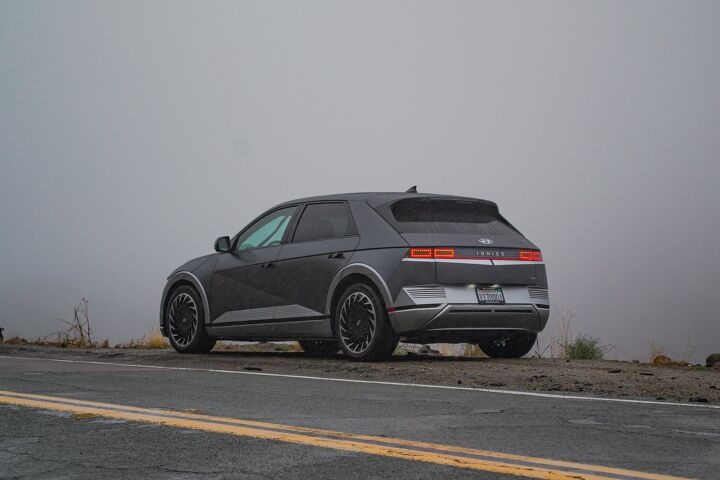






















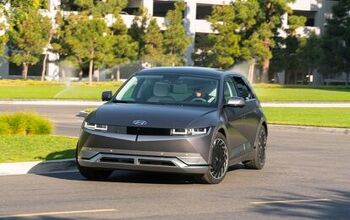


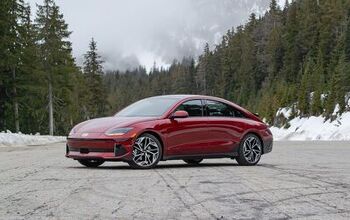

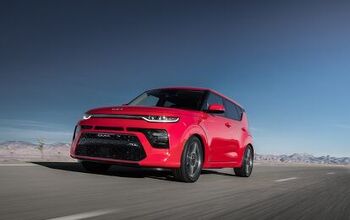

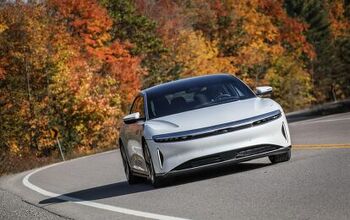

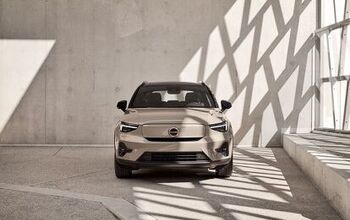



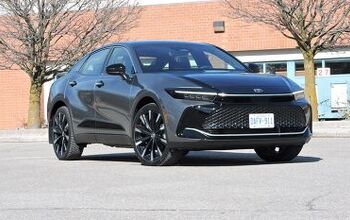
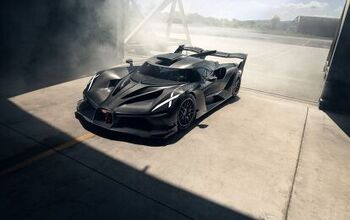
Comments
Join the conversation